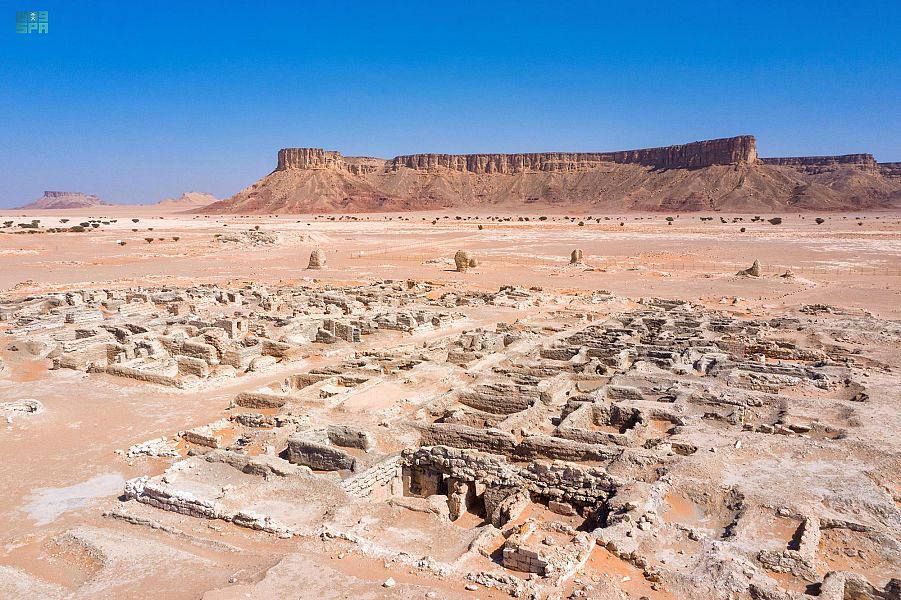
UNESCO has registered the Cultural Landscape of Al-Faw Archaeological Area located in the Riyadh region on the World Heritage List, making it the eighth Saudi site to receive this recognition.
The Al-Faw Archaeological Area, located in Wadi ad-Dawasir, south of Riyadh, spans 50 km² with a buffer zone of 275 km² at the intersection of the Empty Quarter desert and the Tuwaiq mountain range.
The site contains diverse archaeological evidence dating back to prehistoric times, large tombs with clear formations, cultural and architectural elements from the ancient caravan city, an oasis with ancient irrigation systems, and significant rock art and inscriptions.
Minister of Culture Prince Badr bin Abdullah announced achieving a Vision 2030 goal, saying, "By registering the Cultural Landscape of Al-Faw Archaeological Area on the World Heritage List in the UNESCO, the cultural sector achieved its target in Vision 2030 regarding the number of Saudi sites registered on the World Heritage List, with the vision and guidance of the Crown Prince."
He further stated, "The recent registration underscores Saudi Arabia"s deep historical roots and its leading role in preserving global human heritage, aligning with Saudi Vision 2030, which emphasizes the importance of national identity and heritage."
"The Kingdom understands the importance of heritage, its preservation, and educating the world about it. This creates a solid foundation for the present and charts a path for the future," said Prince Badr. He added that the Heritage Commission is committed to developing national heritage assets, increasing awareness, and ensuring their sustainability for future generations.
Prince Badr highlighted that this achievement reflects the significant support and attention given to Saudi heritage by King Salman and Crown Prince.
With the inclusion of Al-Faw, the Saudi sites on the UNESCO World Heritage List now include: Al-Hijr Archaeological Site (2008), At-Turaif District in ad-Dir"iyah (2010), Historic Jeddah (2014), Rock Art in the Hail Region (2015), Al-Ahsa Oasis (2018), Hima Cultural Area (2021), and "Uruq Bani Ma"arid Protected Area (2023).
The Cultural Landscape of Al-Faw Archaeological Area lies at a crucial point on ancient Arabian trade routes and was abandoned around the 5th century CE. The site includes nearly 12,000 archaeological remains spanning from prehistoric times to the late pre-Islamic era, showcasing the adaptation of three different populations to changing environmental conditions. Key features include Palaeolithic and Neolithic tools, tapered structures, cairns, circular constructions, the sacred mountain of Khashm Qaryah, rock carvings, funerary tumuli, forts, caravanserais, and remnants of the ancient city of Qaryat al-Faw.











